Install Windows Server 2012 R2 Manually Using Local or Remote Media
This procedure describes how to boot the Microsoft Windows Server 2012 R2 operating system from local or remote media. It assumes that you are booting the Windows Server installation media from one of the following sources:
Windows Server 2012 R2 DVD
Windows Server 2012 R2 ISO image
Note - The Windows Server 2012 R2 ISO image can be used for remote installation or for creating an installation DVD.
Note - If you are booting the installation media from a PXE environment, see Install Windows Server 2012 R2 Using PXE Network Boot for instructions.
- Ensure that the installation media is available to boot.
-
For Distribution DVD, insert the Windows 2012 R2 Distribution media (single DVD) into the local or remote DVD-ROM drive.
-
For ISO image, ensure that the Windows 2012 R2 ISO image is available and that the ISO image has been mounted in the Oracle ILOM Remote System Console Plus application using the KVMS menu.
For additional information about how to set up the installation media, see Selecting the Boot Media Option.
-
- Reset or power on the server.
For example, do one of the following to reset the server:
-
From the local server, press the Power button on the front panel of the server for approximately 1 second to power off the server, then press the Power button again to power on the server.
-
From the Oracle ILOM web interface, click Host Management → Power Control, select Reset from the Select Action list box, then click Save.
-
From the Oracle ILOM CLI, type: reset /System
The server begins the boot process and the BIOS screen appears.

Note - The next events occur very quickly; therefore, be ready to press the F8 key. Watch carefully for messages as they appear on the screen for a brief time. You might want to enlarge the size of your screen to eliminate scroll bars. -
- In the BIOS screen, press the F8 key to specify a temporary boot device for the Windows Server
OS installation.
[Boot Pop Up Menu Selected] appears at the bottom of the BIOS screen.
Then the Please Select Boot Device menu appears. The screen that appears will be different depending on whether you have the UEFI/BIOS Boot Mode configured for Legacy or UEFI.
For Legacy BIOS Boot Mode, a screen similar to the following appears:
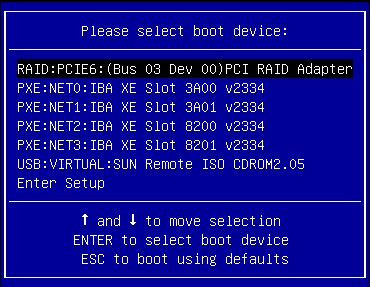
For UEFI Boot Mode, a screen similar to the following appears:
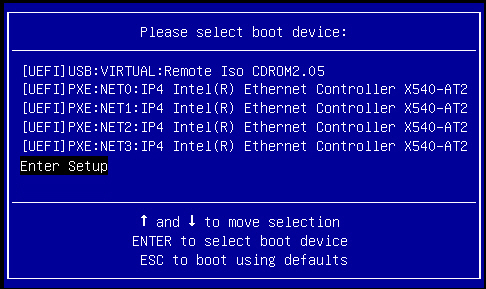
Note - The Please Select Boot Device menu that appears might differ depending on the type of disk controller and other hardware, such as PCIe network cards, installed in your server. - In the Please Select Boot Device menu, select the menu item according to the Windows media
installation method and UEFI/BIOS boot mode you elected to use, then press
Enter.
For example, if you elected to use the Oracle ILOM Remote System Console Plus application delivery method, select USB:VIRTUAL: Remote Iso CDROM2.05 from the Legacy BIOS Boot Mode screen or [UEFI]USB:VIRTUAL: Remote Iso CDROM2.05 from the UEFI Boot Mode screen.
- If prompted with Press
any key to boot from CD, press any key.
The Windows installation wizard starts and the Loading Files screen appears.

The Windows installation wizard continues until the Language Localization dialog appears.
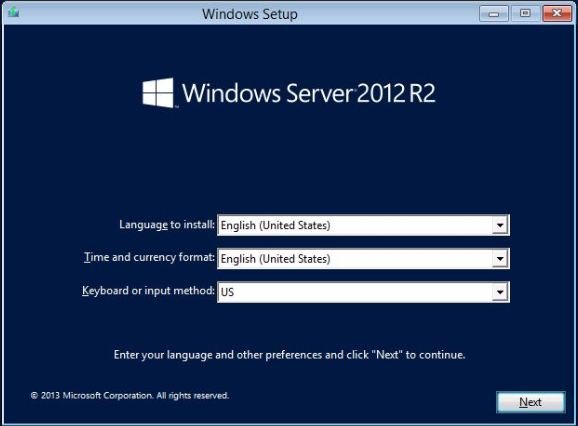
- Select your language and
other preferences, then click Next to
continue.
The Install Now screen appears.
Note - The Install Now screen enables you to continue the installation or access an optional Repair menu (see lower left of the screen) for troubleshooting.
- Click Install now.
The Setup Is starting screen appears.
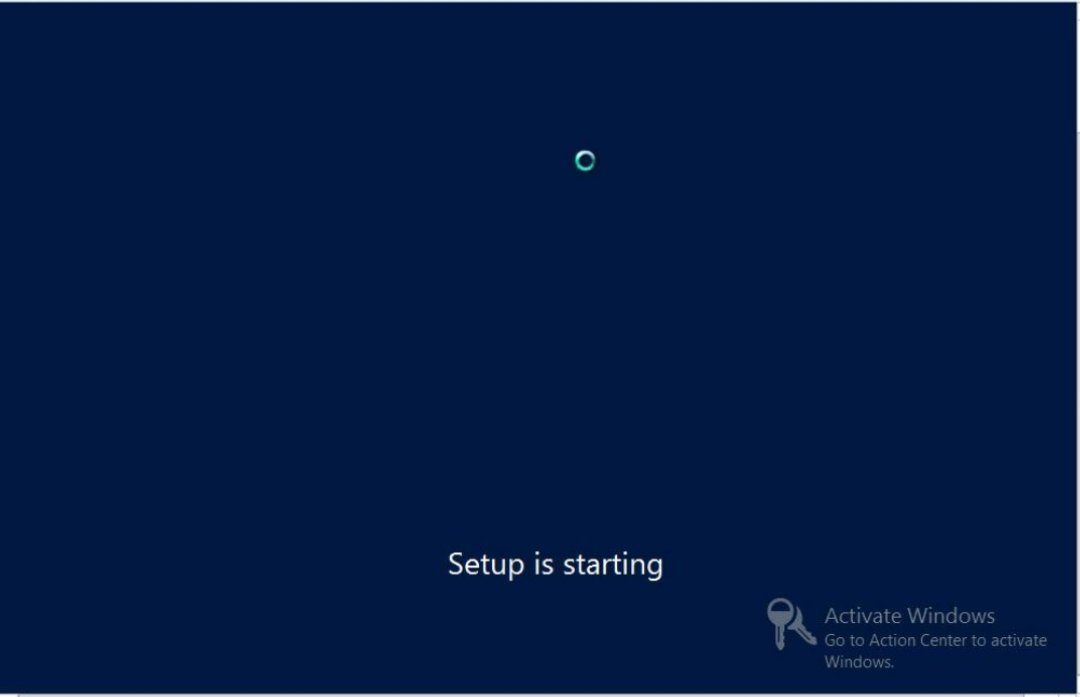
Then the Select the operating system dialog appears.
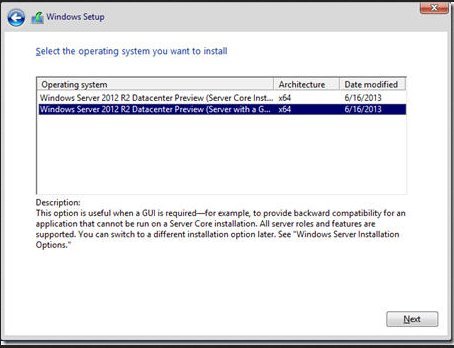
- In the Select the Operating System dialog, select the desired operating system, then click
Next to continue.
For most installs, select Windows Server 2012 R2 Datacenter (Server with a GUI) at the bottom of the list.
For more information on the different types of Windows operating systems, see the Windows Server 2012 R2 documentation at http://technet.microsoft.com/en-us/windowsserver/default.aspx.
The License Terms screen appears.
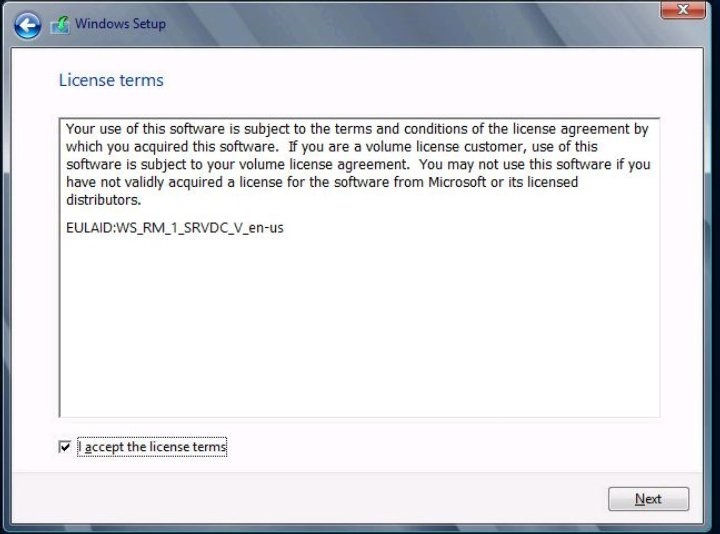
- In the License Terms screen,
check the I accept the license terms box, then
click Next to continue.
The Which Type of Installation Do You Want dialog appears.
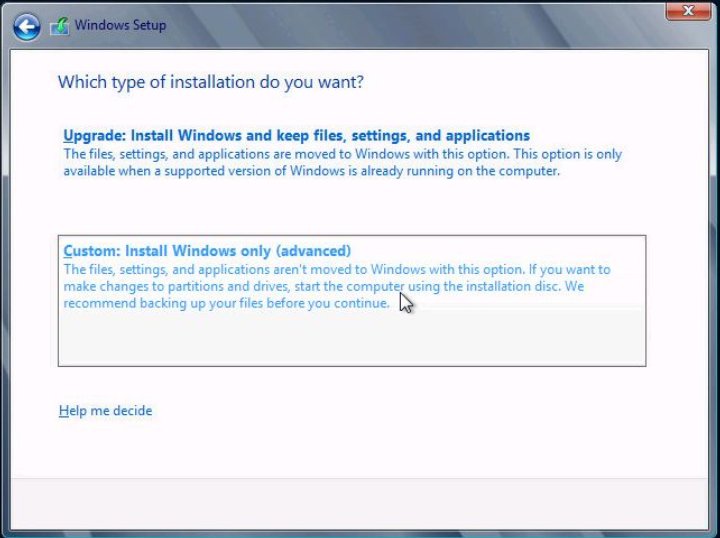
- For all new installations, in the Which Type of Installation Do You Want dialog, click
Custom: Install Windows only (advanced).
The Where Do You Want to Install Windows dialog appears.

-
(Partition Drive, advanced) In the lower portion of the Where Do You Want
to Install Windows dialog, do the following:

- Select (highlight) the disk to which you want to install Windows Server OS, then click
Next.
The Installing Windows screen appears.

The setup and installation process begins and files are copied to the target.
The Windows Needs to Restart to Continue screen appears.
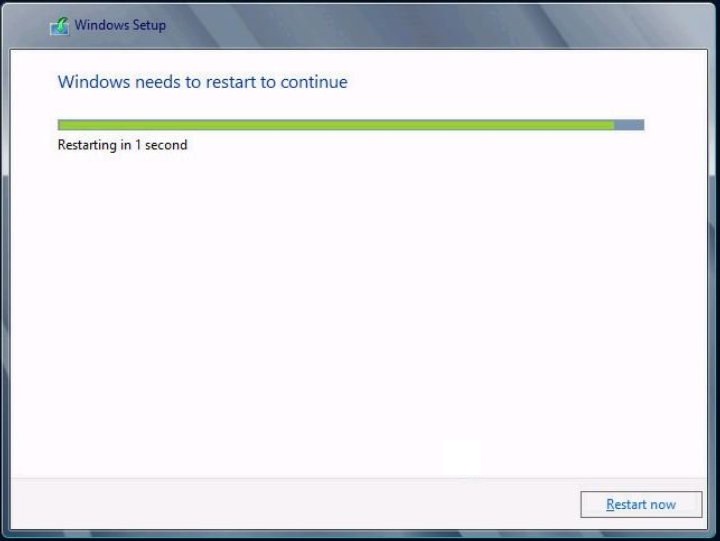
The system reboots.
- After the system reboots, wait while the Getting Devices Ready screen appears and the Windows
Installation Wizard configures the device settings.
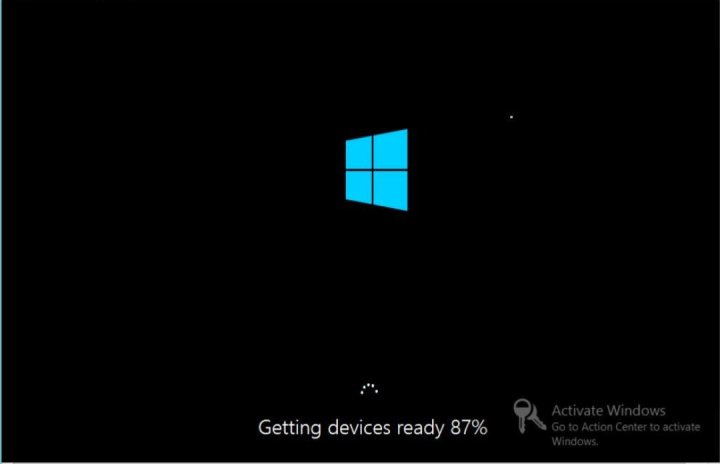
After the devices are configured, the system reboots again and the Settings screen appears.
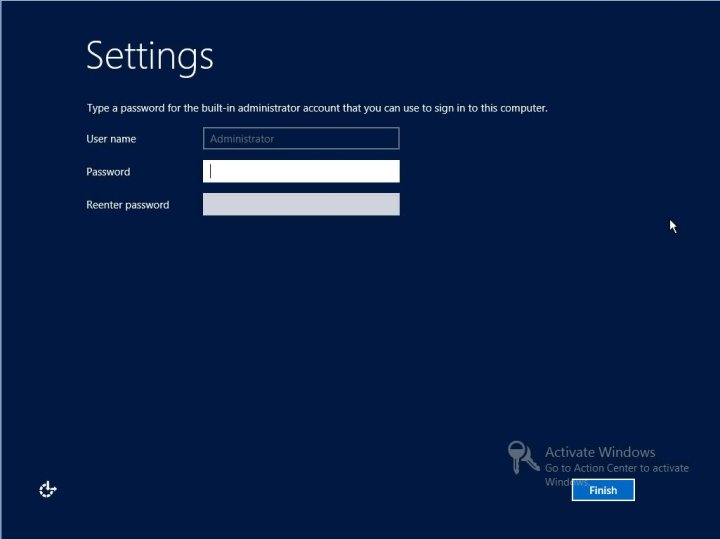
- Enter the Administrator user
name and password, then click Finish.
The Finalizing Your Settings screen appears.
This screen indicates that the Windows OS has been installed.
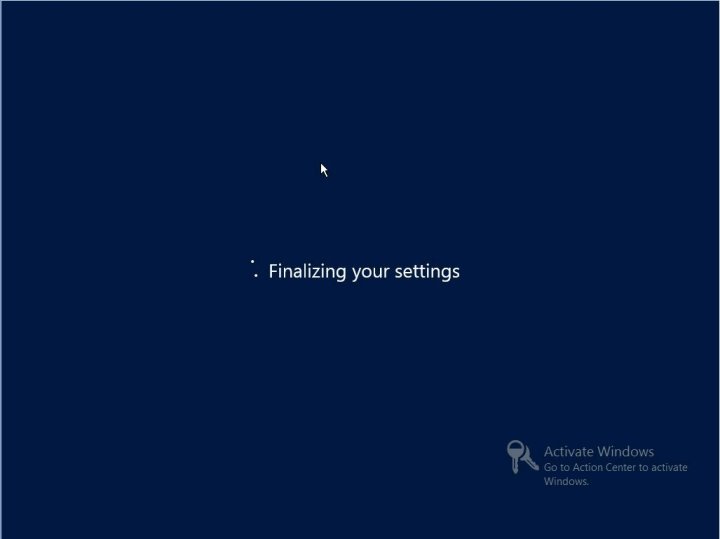
- After the installation completes, type Ctrl+Alt+Delete to log
in.
The Administrator login screen appears.

- Enter the Administrator password,
then click the arrow to log in.
The Windows Server desktop appears.
This completes the installation.
- Proceed to Post Installation Tasks for Windows Server OS and perform the post installation tasks.